Abstract
Pigeons were trained on a trial procedure in a Skinner box. Each trial began with a fixed-interval schedule. Responding on this schedule produced a stimulus and a delayed trial outcome. The stimulus signalled whether the forthcoming outcome was reinforcement or nonreinforcement. Thus, the response was an observing response. When reinforcement was the outcome on 20% of the trials, response rates in the fixed interval were higher than when reinforcement was the outcome on 80% of the trials. This result is consistent with the hypothesis that observing responses are reinforced by the information associated with the stimulus signalling reinforcement. The result seems inconsistent with the hypothesis that observing responses are also reinforced by the information associated with the stimulus signalling nonreinforcement.
Full text
PDF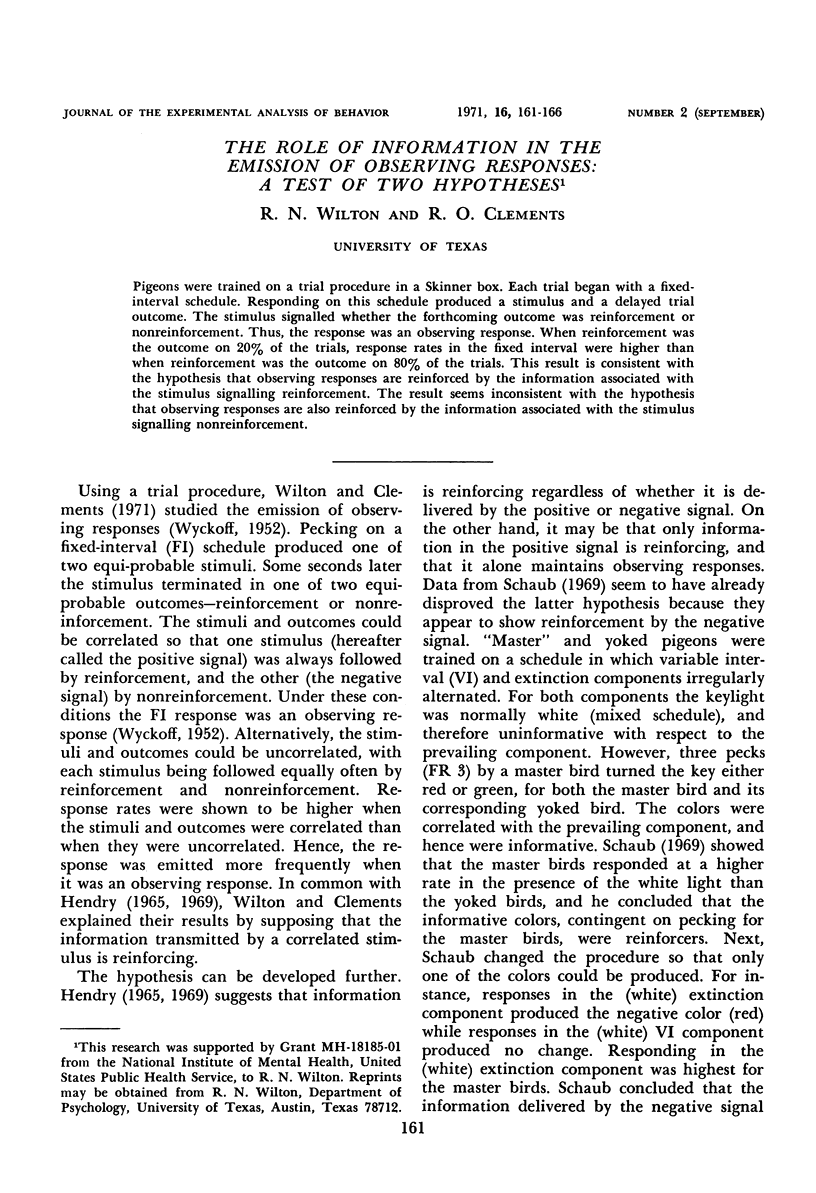
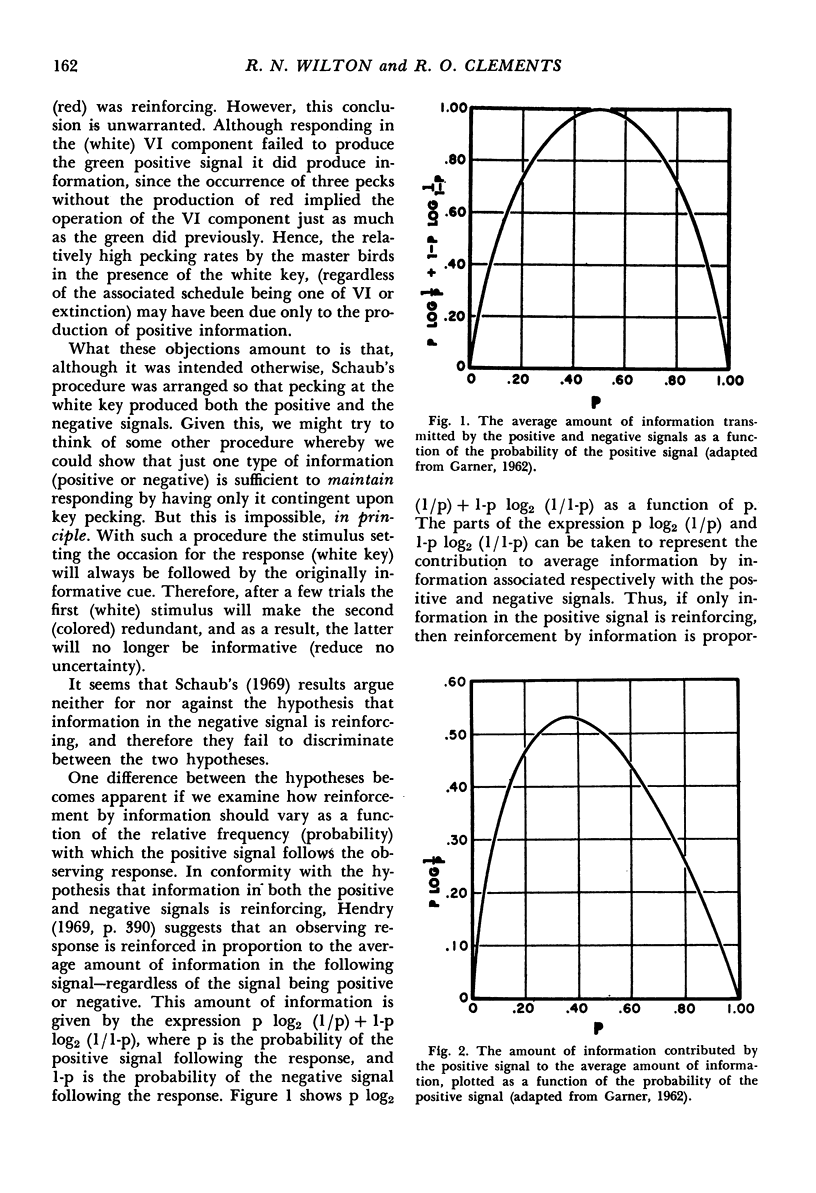
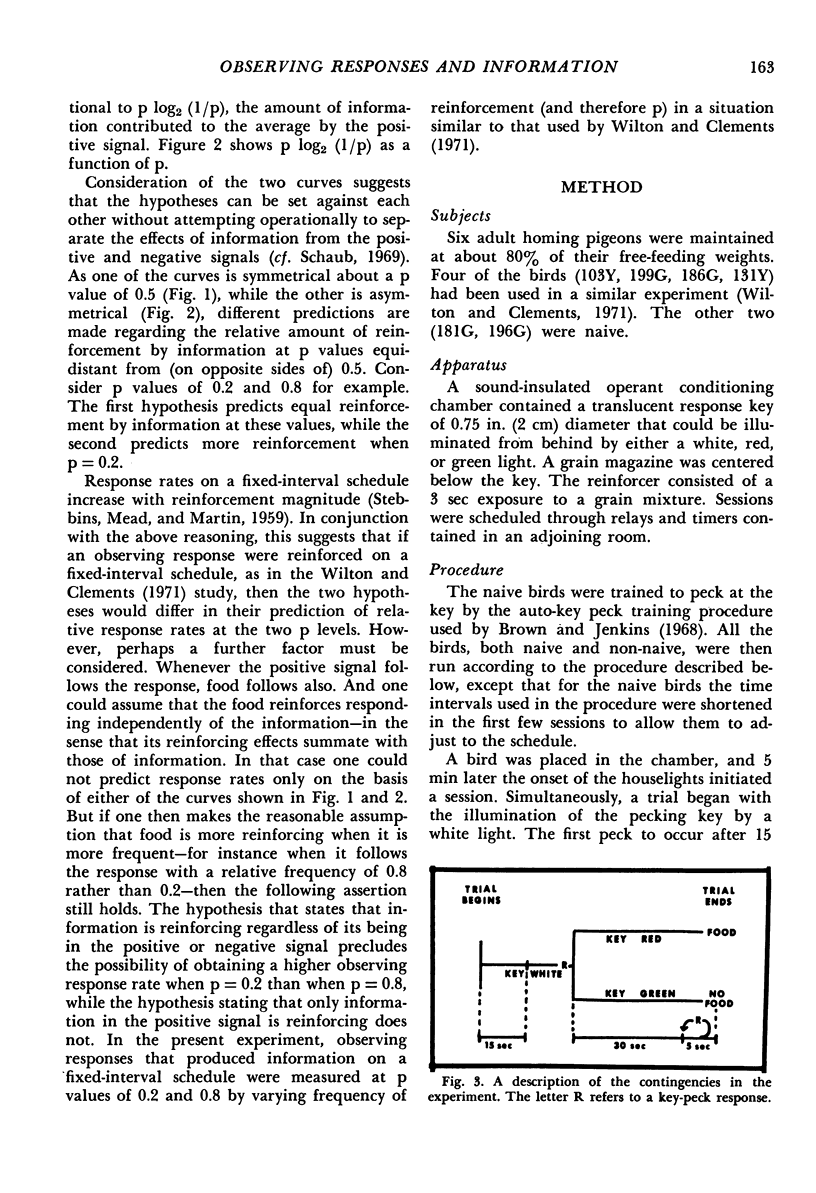
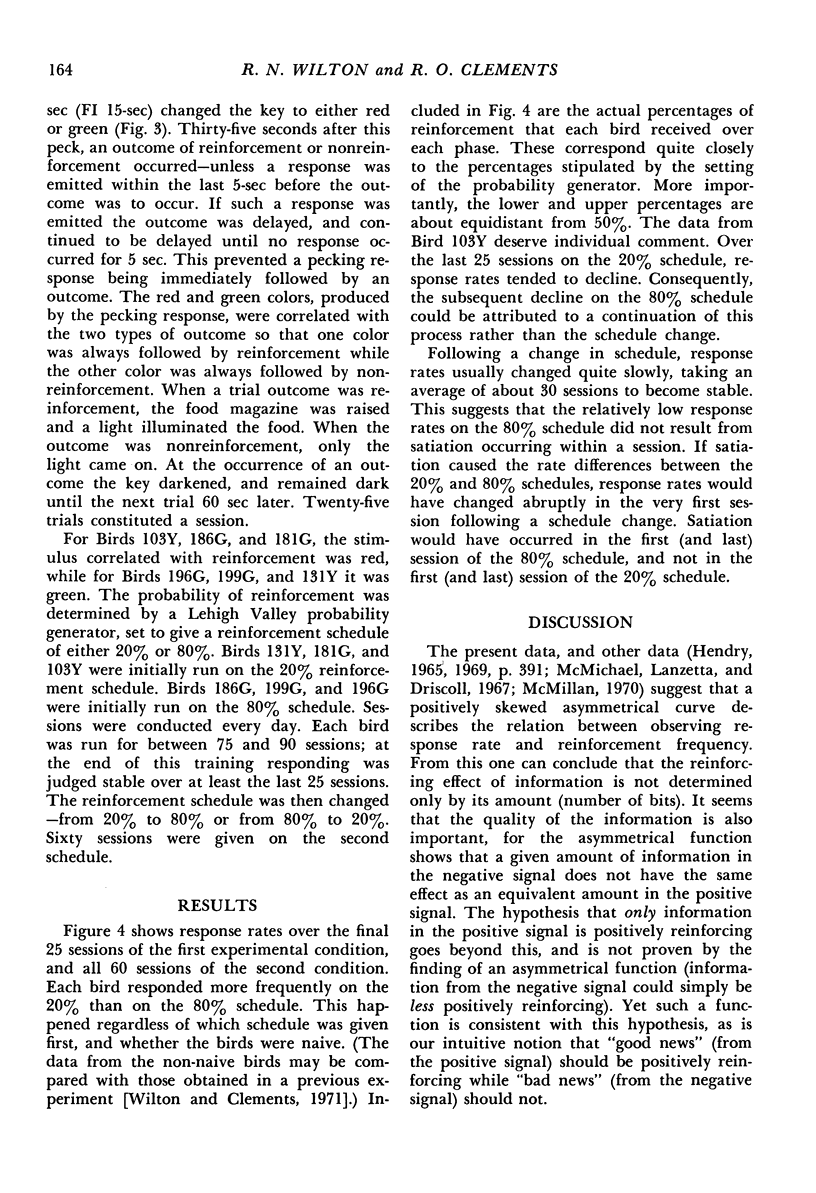
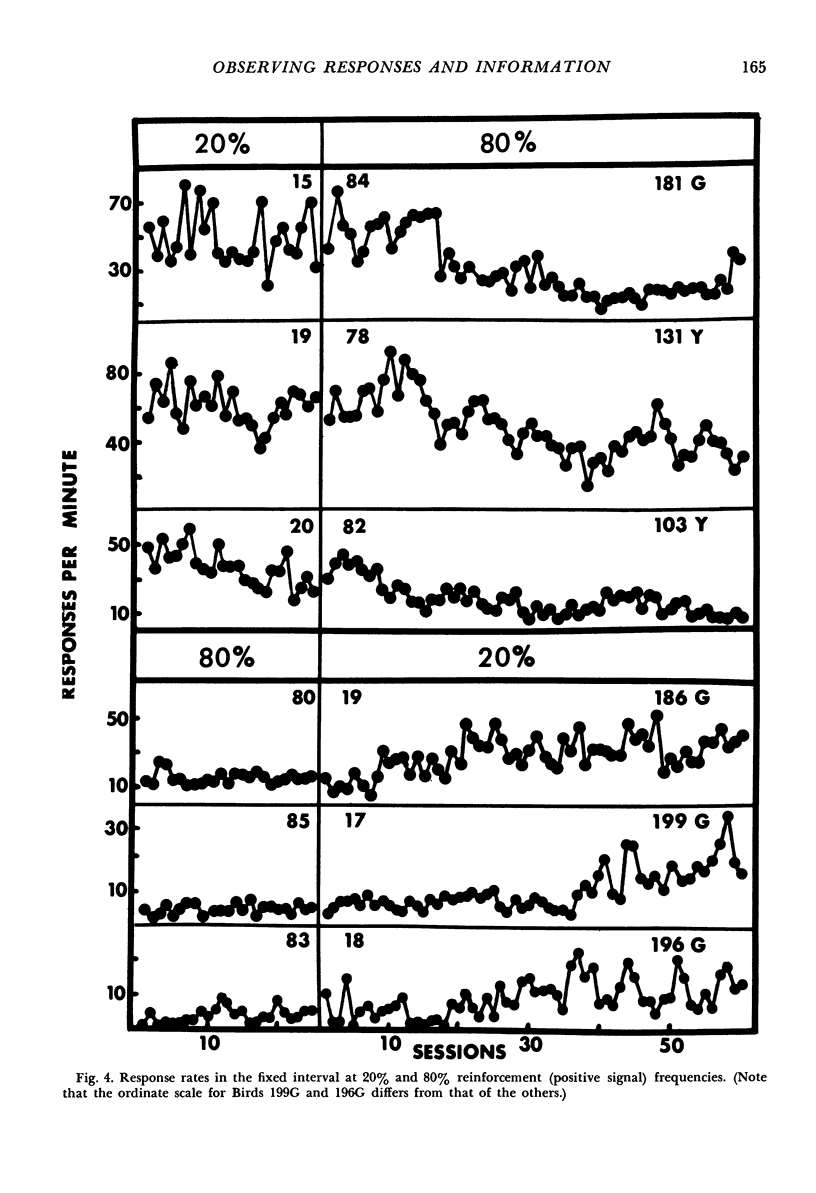
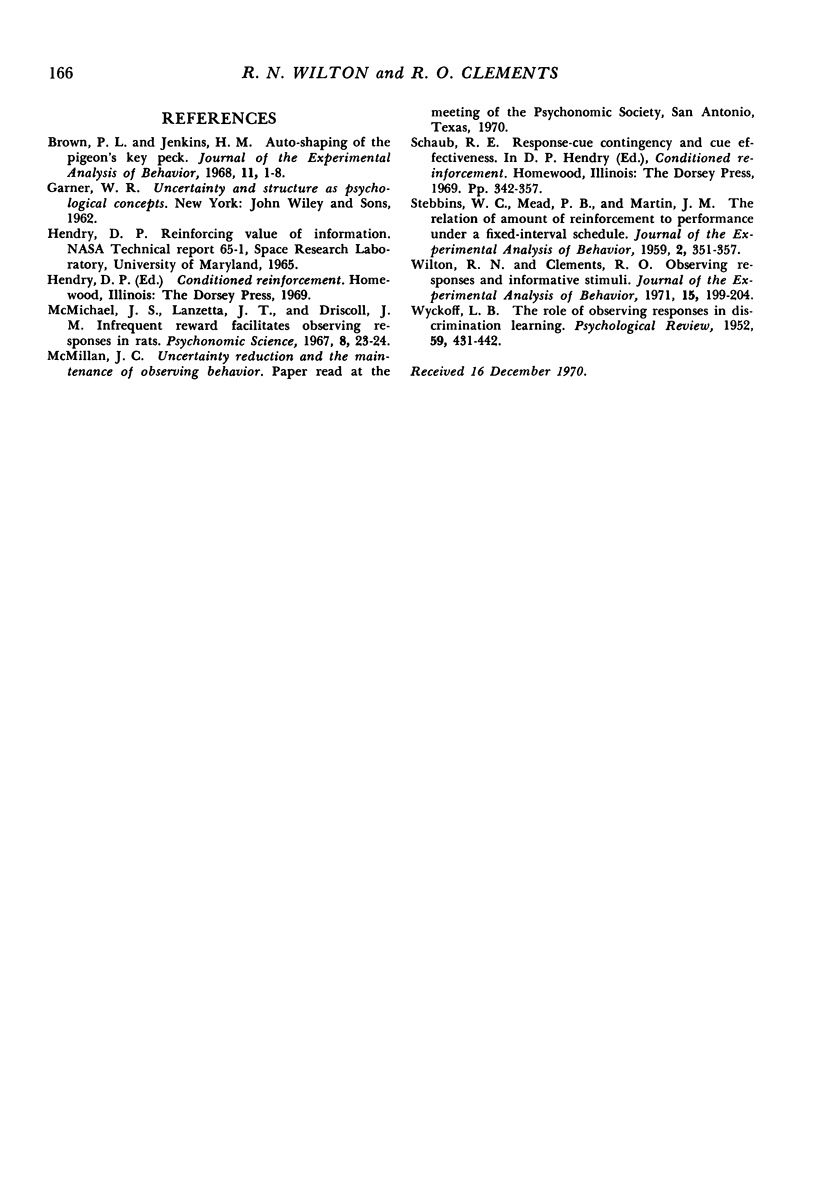
Selected References
These references are in PubMed. This may not be the complete list of references from this article.
- Brown P. L., Jenkins H. M. Auto-shaping of the pigeon's key-peck. J Exp Anal Behav. 1968 Jan;11(1):1–8. doi: 10.1901/jeab.1968.11-1. [DOI] [PMC free article] [PubMed] [Google Scholar]
- STEBBINS W. C., MEAD P. B., MARTIN J. M. The relation of amount of reinforcement to performance under a fixed-in-terval schedule. J Exp Anal Behav. 1959 Oct;2:351–355. doi: 10.1901/jeab.1959.2-351. [DOI] [PMC free article] [PubMed] [Google Scholar]
- WYCKOFF L. B., Jr The role of observing responses in discrimination learning. Psychol Rev. 1952 Nov;59(6):431–442. doi: 10.1037/h0053932. [DOI] [PubMed] [Google Scholar]
- Wilton R. N., Clements R. O. Observing responses and informative stimuli. J Exp Anal Behav. 1971 Mar;15(2):199–204. doi: 10.1901/jeab.1971.15-199. [DOI] [PMC free article] [PubMed] [Google Scholar]


